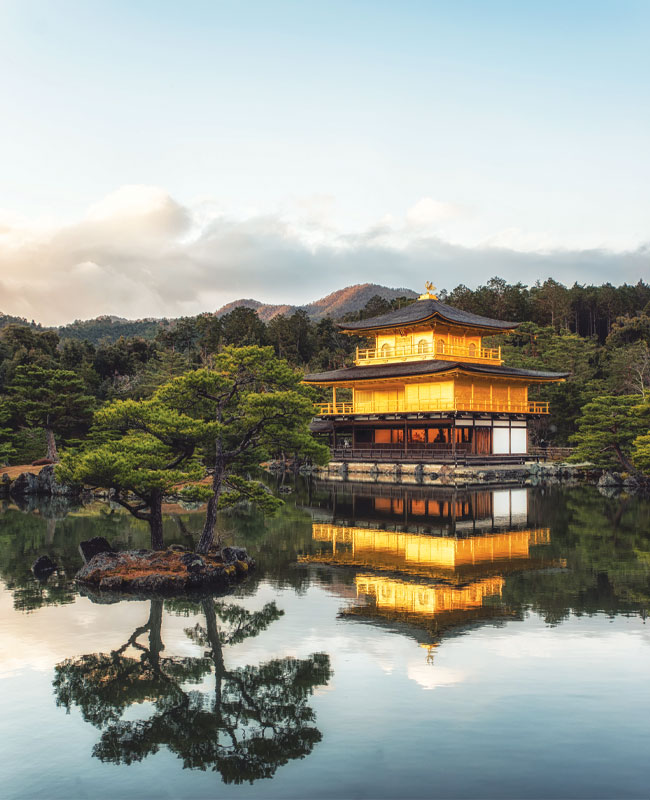
5 Beautiful Japanese Temples: Discover the Power of Tranquility
- Text by Nina Martyris
- Photography by Shutterstock.com
When you hear the words “Japanese temple,” what kind of images spring to mind?
Is it a blue-tiled roof with cornices or a delicate wooden frame? A dry landscaped garden that reflects a whole world through stones and sand? Or a simple window that is square or round? Is it a field of tender green shoots washed by the spring rain? Or red leaves scattered across the mountains by the autumn wind?
Perhaps it’s a medley of all these images. What ties them together is the spirit rooted in Buddhism. The beautiful Japanese temples exemplify the elegance and ethereal simplicity of Zen, and have been a source of enlightenment for thousands of years.
Ever since it was introduced to Japan from China 1,400 years ago, Buddhism has woven its way into the Japanese way of life, affecting everything from people’s clothing, food, and interiors to culture and aesthetic consciousness. And nowhere is this influence more obvious than in Japanese temple architecture.
Japan has nearly 80,000 temples, most of which are located in the three ancient cities of Kyoto, Nara, and Kamakura. The architecture is derived from the Northern and Southern dynasties and the Tang Dynasty of China.
Typically, these rail-style buildings with wooden frames are closely integrated with the surroundings. The landscaping, with its thoughtful arrangement of trees, rocks, and flowing water, reflects the eternal cosmic harmony between the earth and the larger universe.
Please follow in our footsteps as we travel to 5 Japanese temple, each carefully chosen for its historic value and unique Zen characteristics.
Genko-an Temple
Windows to the world

A little road with an unpainted wooden sign leads you to the Soto Zen Genko-an Temple. It’s located in northwest Kyoto. It’s not a large temple. But this Japanese temple has a distinctive architectural feature: two windows—one round and the other square, which represent the fundamentals of Buddhist teaching.
The square Window of Delusion represents people’s obsession with their attachments and their inability to escape birth, old age, sickness, and death. The round Window of Enlightenment represents Zen, wisdom, and the universe.
As I gazed through them, I wondered whether the monks who designed these windows were inspired by the ancient saying “The sky is round and the earth is square.”
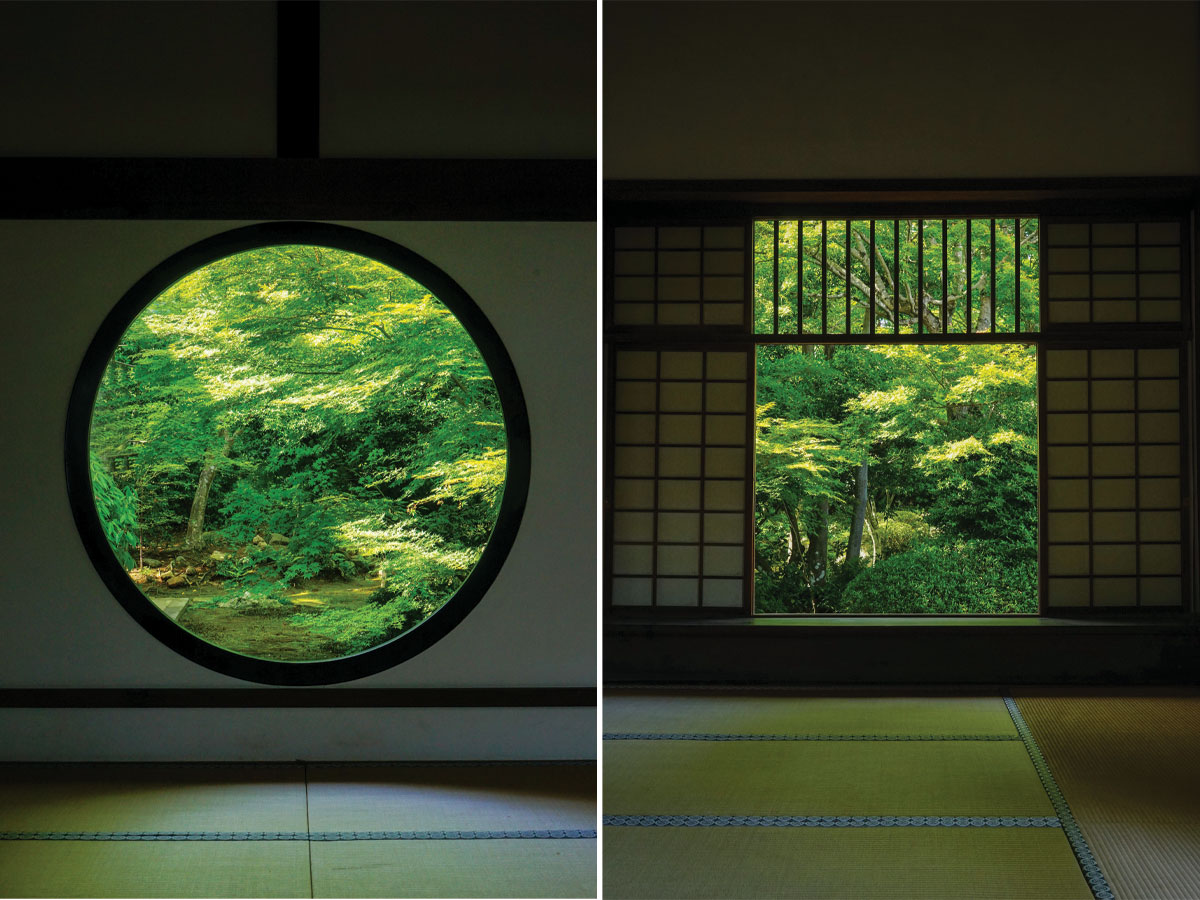
Situated on the left and right side of the hall, these windows are like doors asking visitors to choose between the two paths. People from all over the world come to sit before these portals.
Seeing through the doors, I can imagine the change of seasons would have played out in front of our eyes like a beautiful painting that has been changing constantly.
When I visited, it was a windless day. In the beautiful courtyard garden outside, the trees and time itself seemed to stand still. Only the chirping of birds reminded us that the world was still operating as usual.
This is a place that invites you to sit down, close your eyes, and, for a short time, lay down your great troubles.
Kiyomizu-dera Temple
A spoonful of falling water

In order to get closer to the gods, religious buildings try to reach for the skies. Christian churches have towering steeples, while in the East, temples are carved directly onto mountains.
According to feng shui, buildings near mountains and water are highly desirable. An excellent example of this is the Kiyomizu-dera. Located in eastern Kyoto, this Japanese temple is a UNESCO World Cultural Heritage site.
Its name means “pure water,” a reference to the waterfall on Otowa Mountain. The Otowa waterfall divides into three streams representing longevity, health, and wisdom. The smooth flow of water soothes the state of mind, creating beautiful tranquility that buddha practitioners seek.
At the foot of the mountain, visitors usually use long-handled spoons to sip the water, which is believed to ward off disease and disaster.

The most famous feature of this Japanese temple is its wooden stage, a 400-year-old viewing platform supported by 18 logs. It was built with traditional Japanese craftsmanship, without a single nail, using mortise-and-tenon joinery. It’s strong enough to withstand earthquakes and offers a great vantage point to take in the beauty of Kyoto.
Kinkaku-ji Temple
The gold and the beautiful

When I arrived at Kinkaku-ji in northern Kyoto, I was confused by its gorgeous façade. Unlike most Japanese temples, Kinkaku-ji is a showstopper. As its name indicates, its upper two floors are covered with gold leaf that shimmers with the light reflecting off the Kyoko-chi (“mirror pond”) in front of it.
Originally owned by an aristocratic family in Japan’s Kamakura period, it has been burned down and rebuilt several times over the last six centuries. The current temple was built in 1955.
Each floor represents a different architectural style. The Chamber of Dharma Waters on the first floor is in the shinden-zukuri style and houses a sitting statue of Sakyamuni wearing a crown. A pavilion in the west extends into the pond.
The second floor, The Tower of Sound Waves, is a Japanese-style Buddhist temple with latticed windows dedicated to Guanyin.
The third floor is a square Buddha hall with three Buddhas. The Cupola of the Ultimate is in the Zen style of the Tang Dynasty and capped with an auspicious golden phoenix.
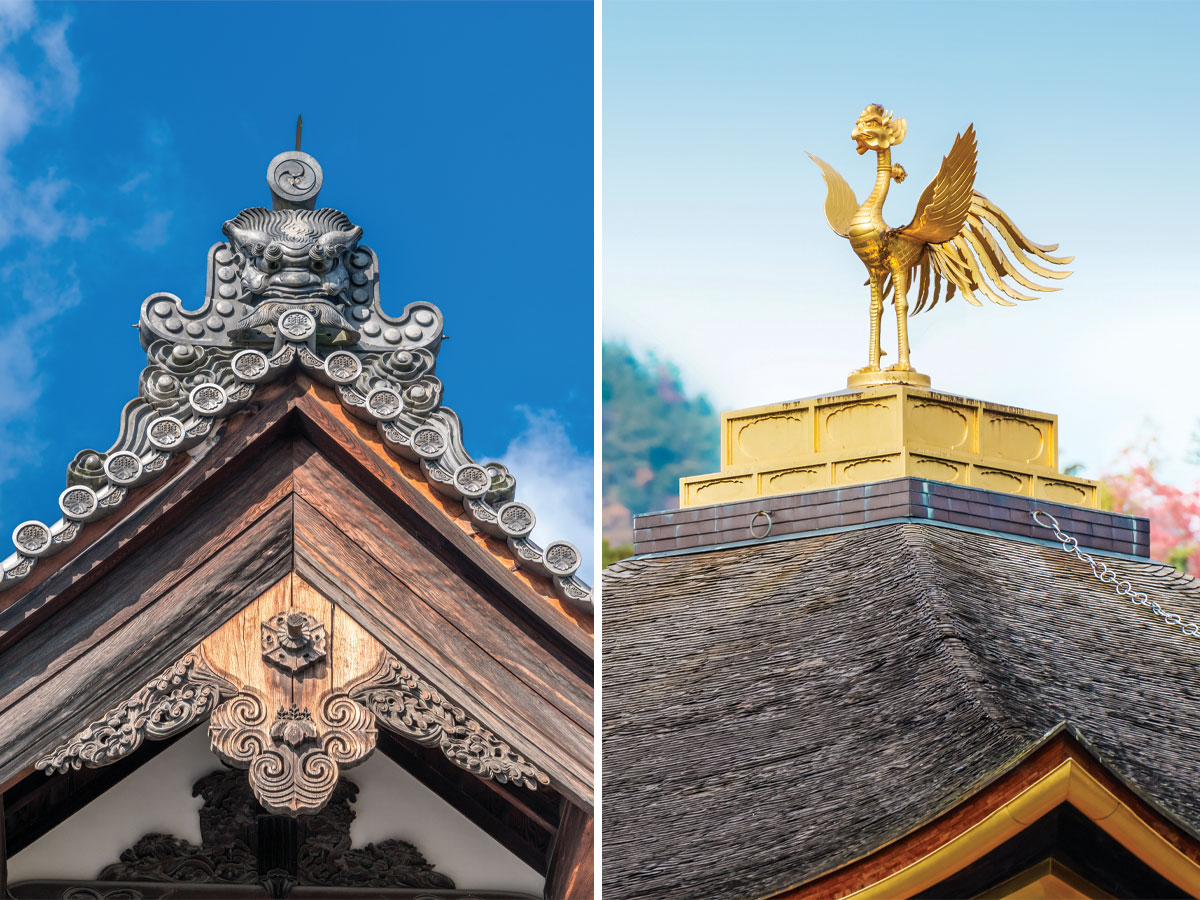
It struck me that the history of the temple was similar to that of Buddha Shakyamuni. The beginning of the temple similarly started from royal families. Buddha Shakyamuni turned away from worldliness towards enlightenment. Perhaps the gold memorialized this conversion.
Life is fleeting. Wealth and fame are like bubbles. The dynasty of that time has long gone, but Buddha Hall is still shining.
Daitoku-ji Temple
No water, but a garden that flows
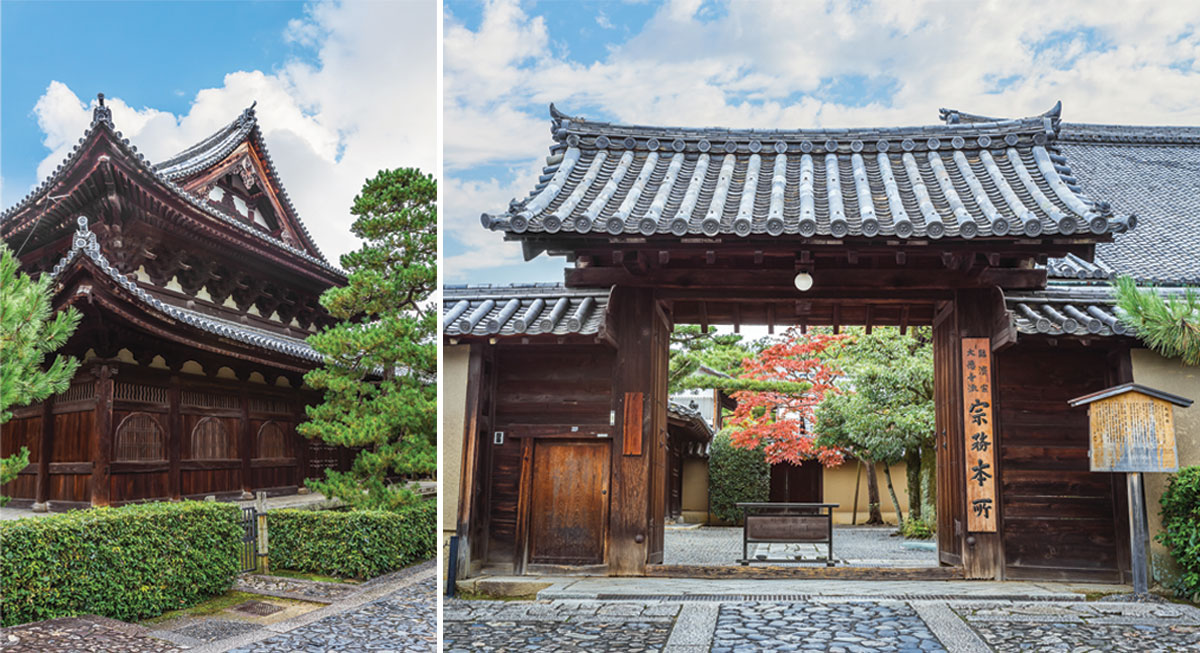
I decided to visit Daitoku-ji out of nostalgia for my childhood. This is a temple where the master Ikkyu practiced as an abbot and where his calligraphy is still preserved.
Like many Japanese monasteries, Daitoku-ji was damaged in the war and rebuilt. There are 21 buildings in Daitoku-ji today that showcase the Zen architecture of the Muromachi period. Their most distinctive feature is the dry garden.
It is called “dry” because there’s no running water and no flowering plants. The landscaping uses only white sand and stones, but in such a powerful way that, despite the lack of water, viewers feel the flow and vitality of the mountains and rivers.
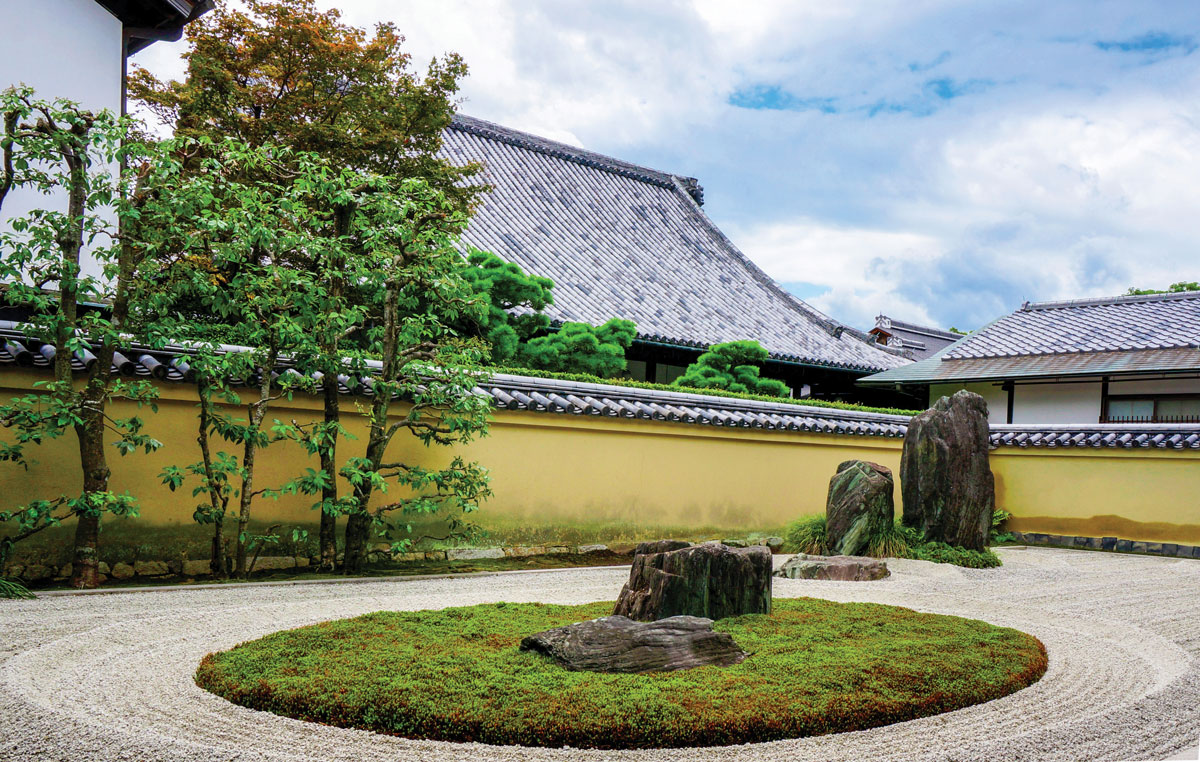
The most famous, in Daisen-in, was founded by the Zen priest Kogaku Soko, a master of the early Edo period. As ethereal as a Song landscape painting, it doesn’t exist in isolation, but naturally surrounds the main building, simulating the openness of the mountains and rivers.
Lines drawn on the sand mimic rivers that gradually widen from narrow torrents, symbolizing the maturity of life from youth to old age. Scattered rocks represent suffering on the journey.
Every day, the flowing sand lines are altered by wind and water, and eventually they merge into flat, white gravel, representing life’s journey dissolving into nothingness.
The beauty of this garden lies in the way it articulates the philosophy of the cycle of life and the eternal circulation of heaven and the Tao.
Toshodai-ji Temple
The monk who brought Buddhism to Japan
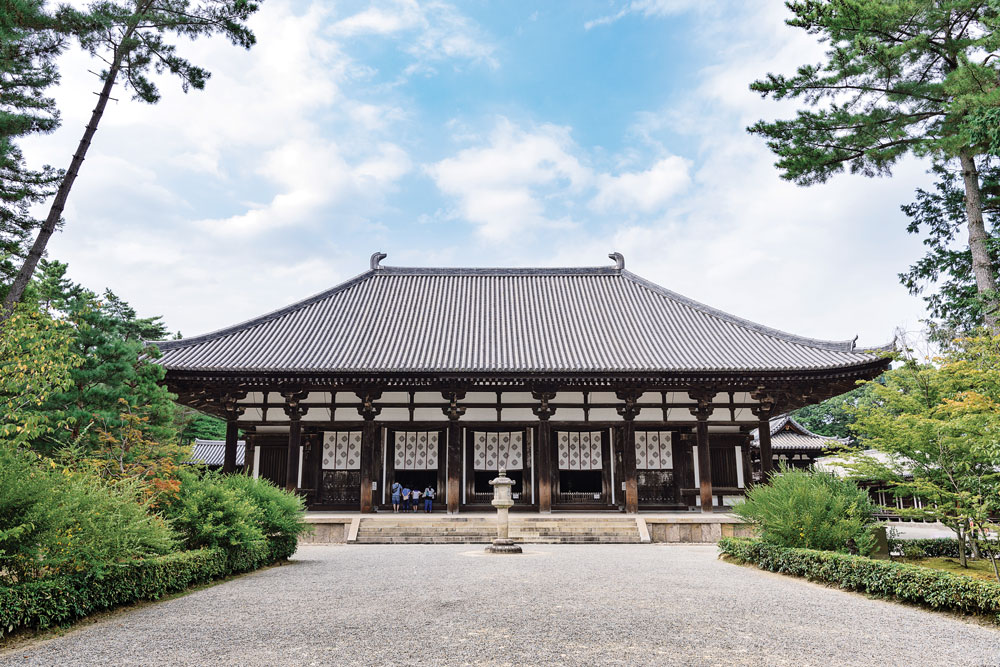
There are two very famous monks in Chinese history: Xuanzang, who brought the Buddhist scriptures from India to China, and Jianzhen, who brought them to Japan.
Jianzhen was invited to teach Buddhism in Japan. The sea voyage was short but highly dangerous, and it took six attempts and 11 years for him to succeed. He suffered greatly, even contracting an infection that left him blind.
When Jianzhen finally led his dharma regiment into Kyoto, the emperor made him senior monk at the royal Todai-ji monastery. After two years, however, he left the imposing monastery and built a new temple outside the city, Toshodai-ji.

Toshodai-ji was the largest and most beautiful building of the Tenpyo era. Its snow-white walls, dark woodwork, raised cornices, and deep sense of ease gave me a feel of the Tang Dynasty. The Classic Golden Hall recalled the Great East Hall of Foguang Temple in Shanxi.
Unfortunately, when it was repaired 300 years ago, the craftsmanship of the Tang Dynasty had been lost in Japan. The roof was disproportionately raised, earning it the nickname “big-headed house.”
Visitors with the right timing can view Jianzhen’s original dry-lacquered statue, which is displayed one day each year. On the other days, imitations are exhibited. This statue was made before Jianzhen died and is so realistic that you almost feel the master breathing and ready to start a dialogue with you across time and space.










